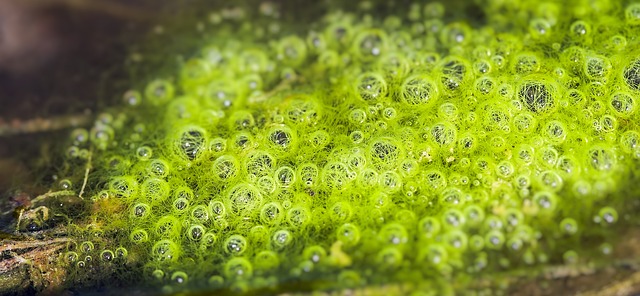Puffer Salamanders
Siren of the Singing Sea
The Singing Sea in northern Nefrale received its name due to the eerie sounds that echo through the valley at dusk. It was not until 1768 that these sounds were connected to a species of large salamander native to the sea, which communicate with one another by blowing air through an air sac on their chins.
 Though puffer salamanders lay their eggs in water, they mate on land. They generally surface at dusk, and call to each other through their air sacs, as well as rapidly changing color. While adult salamanders have no natural predators, their young are vulnerable. Once the female has fertilized the eggs, she lays them in an algae that is poisonous to most other animals in the sea. The young salamanders eat the algae, which allows them to secrete their poison from their skin. As they get bigger and switch to eating fish, they stop secreting the poison.
Though puffer salamanders lay their eggs in water, they mate on land. They generally surface at dusk, and call to each other through their air sacs, as well as rapidly changing color. While adult salamanders have no natural predators, their young are vulnerable. Once the female has fertilized the eggs, she lays them in an algae that is poisonous to most other animals in the sea. The young salamanders eat the algae, which allows them to secrete their poison from their skin. As they get bigger and switch to eating fish, they stop secreting the poison.
Appearance
Adult puffer salamanders are 4-6 feet in length. They have six legs with four toes each, and 3 spikes at the end of their tails. Puffer salamanders are mostly aquatic, so they maintain gills all their lives, rather than developing lungs. These gills have extra growths of cartilage on them that resemble sea plants, known as gill ferns. Gill ferns help the salamander hold the air in while they are on land as well as to hide themselves while waiting for their prey. They have some ability to change the color of their skin, except for a gold speckle pattern. Every salamander has a unique speckle pattern, which can be used to identify them.Sex Differences
Male salamanders tend to be slightly smaller than females, able to change from an off-white to a pink color. Their gill ferns are a bright red. Female salamanders are able to change from olive green to black, with brown gill ferns. Both male and female puffer salamanders have speckle patterns which do not change.Air Sac
Both male and female puffer salamanders have an inflatable sac on their chins, giving them their name. When inflating this sac, they can make a number of calls and whistles, which can be heard from a great distance. Puffer salamanders use these to communicate territory boundaries and in mating.Habitat
Puffer salamanders are native of the Singing Sea, and it is the only place they are known to live. The frequent rain and overcast sky in the area helps them keep their skin wet, allowing them to surface on land to mate and occasionally to hunt.Hunting
Puffer salamanders eat a variety of foods. They use their legs and tail to propel them quickly through the water to chase fish. At other times, they hide amongst sea plants to grab fish passing by. They also use the spikes on their tails to stun and kill prey. Though puffer salamanders primarily eat fish and other sea species, they have also been known to hunt birds while on land. They do this by stunning the birds with the spikes on their tails. Though puffer salamanders have no natrual predators, their tail spikes also come in handy when battling over prey with other salamanders or even larger fish species. They have also been known to eat plants native to the area, as well as the skins they shed after molting.Mating

by mploscar
Geographic Distribution
The puffer salamanders primary prey are fish which also live in the Singing Sea. For a brief period, overfishing saw a serious decline in the salamander population, but a petition by a nearby dragon population saw the salamanders returned to their former glory. Since their discovery, dragons have held a particular affinity for the puffer salamanders, due to their six-limbed bodies.

by Nong Vang



Comments